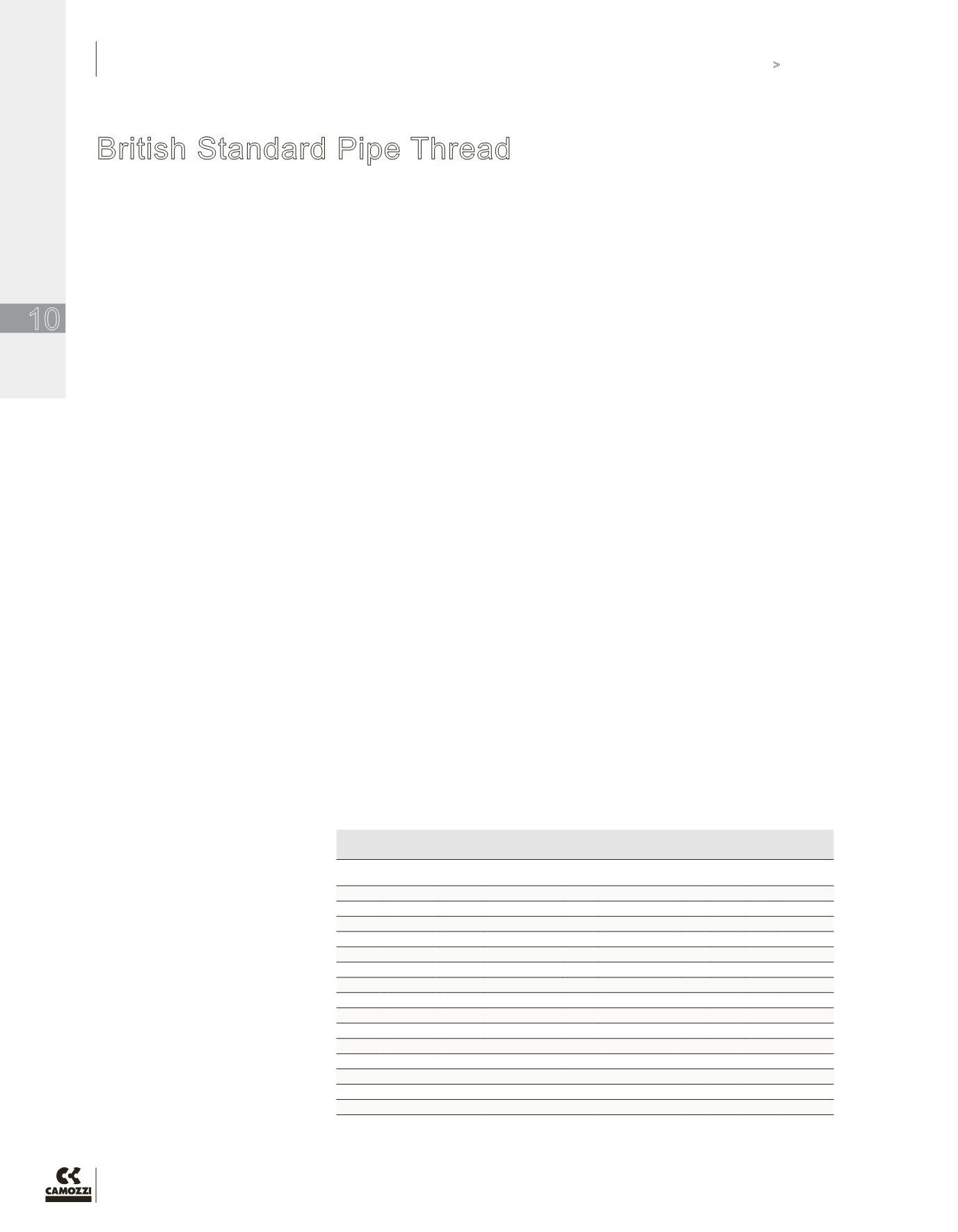

234
The company reserves the right to vary models and dimensions without notice.
These products are designed for industrial applications and are not suitable for sale to the general public.
TECHNICAL DATA
Technical Data
10
NORTH AMERICAN FITTINGS & FLOW CONTROL VALVE CATALOG
>
Release 8.6
Thread
Size
Threads
Per Inch
Pitch Major Diameter of the
Thread
Gauge Length
Corresponding Pipe
[mm]
[mm]
[in]
[mm]
DN OD
[mm]
OD
[in]
Thickness
[mm]
1/16
28
0.907
7.723
0.304
4
1/8
28
0.907
9.728
0.383
4
6 10.2 0.40
2
1/4
19
1.337
13.157
0.518
6
8 13.5 0.53
2.3
3/8
19
1.337
16.662
0.656
6.4
10 17.2 0.68
2.3
1/2
14
1.814
20.995
0.825
8.2
15 21.3 0.84
2.6
3/4
14
1.814
26.441
1.041
9.5
20 26.9 1.06
2.6
1
11
2.309
33.249
1.309
10.4
25 33.7 1.33
3.2
1¼
11
2.309
41.910
1.650
12.7
32 42.4 1.67
3.2
1½
11
2.309
47.803
1.882
12.7
40 48.3 1.90
3.2
2
11
2.309
59.614
2.347
15.9
50 60.3 2.37
3.6
2½
11
2.309
75.184
2.960
17.5
65 76.1 3.00
3.6
3
11
2.309
87.884
3.460
20.6
80 88.9 3.50
4
4
11
2.309
113.030
4.450
25.5
100 114.3 4.50
4.5
5
11
2.309
138.430
5.450
28.6
125 139.7 5.50
5
6
11
2.309
163.830
6.450
28.6
150 165.1 6.50
5
British Standard Pipe Thread
The British Standard Pipe thread (BSP thread) is a family of standard screw thread types that has been
adopted internationally for interconnecting and sealing pipe ends by mating an external (male) with an
internal (female) thread.
Types
Two types of threads are distinguished:
• Parallel threads, which have a constant diameter. (G)
• Taper threads, whose diameter increases or decreases
along the length of the thread. (R)
They can be combined into two types of joints:
• Jointing threads: These are pipe threads for joints made
pressure-tight by the mating of the threads. They always
use a taper external thread, but can have either parallel or
taper internal threads. (In Continental Europe, taper inter-
nal pipe threads are not commonly used.)
• Longscrew threads: These are parallel pipe threads used
where a pressure-tight joint is achieved by the compression
of a soft material (gasket) on to the surface of the external
thread by tightening a backnut against a socket.
Threadform
For both the taper and the parallel pipe threads, the
Whitworth thread form is used, which has the following char-
acteristics:
• symmetrical V-thread in which the angle between the
flanks is 55° (measured in an axial plane)
• one-sixth of this sharp V is truncated at the top and the
bottom
• the threads are rounded equally at crests and roots by cir-
cular arclend tangentially with the flanks
• the theoretical depth of the thread is therefore 0.64times
the nominal pitch the relation between
Pipe thread sizes
The major diameter listed is the
outer diameter of the external
thread. For a taper thread, it
is the diameter at the ”gauge
length” from the small end of
the thread. The taper is “1 to
16”, meaning that for each 16
mm increase in the distance
from the end, the diameter
increases by 1 mm.
A list of 15 thread sizes is defined by the standards,
ranging from 1/16 to 6. The size number was originally
based on the inner diameter measured in inches
(25.4 mm) of a steel tube for which the thread was
intended, but is in the modern metric version of the
standard simply a size number.
Pipe thread designations
These standard pipe threads are formally referred to by
the following sequence of blocks:
• the words “Pipe thread”,
• the document number of the standard (e.g., ”ISO 7”
or ”EN 10226”)
• the symbol for the pipe thread type:
G = external+internal parallel (ISO 228)
R = external taper (ISO 7)
Rp = internal parallel (ISO 7)
Rc = internal taper (ISO 7)
• the thread size
Threads are normally right-hand. For left-hand threads,
the letters ”LH” are appended.



















